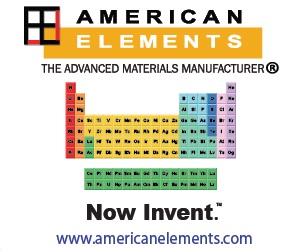
April 22 - 26, 2024
Seattle, Washington
May 7 - 9, 2024 (Virtual)
Symposium Supporters
2024 MRS Spring Meeting & Exhibit
EN09.05.03
Comparison of Mono- and Multi-Layer MoS2 within Non-Aqueous Reactive Carbon Capture and Conversion (RCC) Conditions
When and Where
Apr 24, 2024
9:00am - 9:15am
9:00am - 9:15am
Room 337, Level 3, Summit
Presenter(s)
Co-Author(s)
Kingston Robinson1,Rowan Brower1,Jose Perez Gordillo2,1,Jesus Velazquez1
University of California, Davis1,University of Puerto Rico at Humacao2
Abstract
Kingston Robinson1,Rowan Brower1,Jose Perez Gordillo2,1,Jesus Velazquez1
University of California, Davis1,University of Puerto Rico at Humacao2
With a need to reduce global emissions and scale up alternative energy sources to fossil fuels, RCC integrates CO2 capture and conversion into a singular electrochemical, thermal, or biological process as a feedstock for value added chemicals. Despite significant progress in CO2 electrocatalyst design to improve efficiency, reproducibility, and selectivity in aqueous media, achieving the same milestones within non-aqueous media under RCC conditions remains a challenge. However, preliminary results show that single crystal molybdenum disulfide (MoS2) exhibits high efficiency (~65%) towards CO production under non-aqueous RCC with ionic liquids. The electrocatalytic behavior of MoS2 can be controlled by exposing edge and terrace active sites through surface defects or by modulating its structure through compositions such as thin film monolayers and multi-layer nanosheets. It is hypothesized that by decreasing MoS2 layers, further efficiency and selectivity of CO2 reduction products under relevant non-aqueous RCC conditions will be observed due to increased surface area of active sites. Two different synthetic pathways are detailed in this work, shear exfoliation of bulk MoS2 to yield dispersions of nanosheets and metal organic chemical vapor deposition (MOCVD) of monolayer MoS2 thin films. The shear exfoliation process is a combination of mechanical and liquid-phase techniques, utilizing a homogenizer along with chemical exfoliation from different surfactants. Exfoliating agents such as sodium cholate resulted in MoS2 nanosheets with large terraces while polyvinylpyrrolidone (PVP) resulted in small nanoparticle MoS2 sheets. Therefore, size distribution of MoS2 sheets may be controlled with the type of exfoliating agent. Our MOCVD process utilizes Mo(CO6) and diethyl sulfide (DES) as metal organic precursors flown in a vapor phase with Ar and H2 gas for deposition onto Si/SiO2 wafers. At optimal chamber pressure and temperature as well as precursor/gas flow rates, deposition of nucleation zones, monolayers, and few layered structures occur as a function of time. Shear exfoliated nanosheets and MOCVD deposited monolayers will be tested against single crystal MoS2 under relevant non-aqueous RCC conditions with ionic liquids.Keywords
chemical vapor deposition (CVD) (chemical reaction) | CMP (chemical mechanical processing)
Symposium Organizers
Christopher Barile, University of Nevada, Reno
Nathalie Herlin-Boime, CEA Saclay
Michel Trudeau, Concordia University
Edmund Chun Ming Tse, University Hong Kong
Session Chairs
Michel Trudeau
Edmund Chun Ming Tse



















